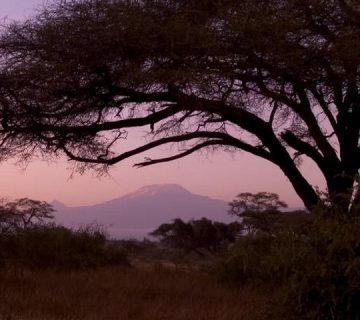Kilimanjaro Trekking Gear and Accessories List: Your Ultimate Guide to Conquering the Roof of Africa
Introduction: Preparing for the Adventure of a Lifetime
Standing at an awe-inspiring 5,895 meters (19,341 feet), Mount Kilimanjaro is not just Africa’s tallest peak but also a beacon for adventurers from around the globe. Aspiring to conquer this majestic mountain requires not only courage and determination but also the right gear. At Kilimanjaro Centre for Trekking and Ecotourism (KCTE), we understand the pivotal role that proper equipment plays in the success of your climb. That’s why we’ve crafted this detailed guide to help you prepare adequately for your journey to the summit.
Embarking on a Kilimanjaro trek is more than just a physical challenge; it’s a transformative experience that invites you to connect with nature and explore your own limits. To ensure that you are fully equipped for every aspect of the climb, we’ve compiled a comprehensive list of essential trekking gear and accessories. From the base to the peak, let’s ensure you’re prepared to face the elements, and enjoy the journey.
H2: Essential Clothing for Kilimanjaro: Layering Up for Success
Base Layers
Starting close to the skin, base layers are crucial for maintaining body temperature. Opt for moisture-wicking materials like merino wool or synthetic fibers that keep you dry and warm. Remember, the key to effective layering is the ability to add or remove layers easily as your body temperature and the weather changes.
Insulation Layers
As you ascend, temperatures can drop significantly. A good quality fleece or down jacket will be your best friend, especially during the chilly nights and the final push to the summit at dawn.
Outer Layers
A waterproof and windproof jacket and pants are essential to protect you from the elements. Conditions on Kilimanjaro can include rain, wind, and even snow, so durable, breathable, and waterproof gear is a must.
H2: Footwear: Foundation of Every Step
Hiking Boots
A sturdy pair of waterproof hiking boots with good ankle support will be one of your most critical investments. Make sure they are well broken-in to avoid blisters.
Socks
Pair your boots with high-quality hiking socks that offer good cushioning and warmth. Consider liner socks for moisture management and to reduce friction.
H2: Headgear and Handwear: Protecting the Extremities
Hats
Bring a brimmed hat for sun protection and a thermal beanie for warmth. Kilimanjaro’s diverse climate zones require both.
Gloves
Insulated, waterproof gloves are necessary to combat the freezing temperatures encountered at higher altitudes, especially near the summit.
H2: Packing Smart: Backpacks and Daypacks
Choosing the right backpack is crucial for your comfort and convenience. A 30-40 liter daypack is sufficient for your daily essentials, whereas your main gear can be carried by porters in a duffle bag, which should be sturdy and waterproof.
H2: Navigational Tools and Health Safety
Health & Safety Gear
Include a first aid kit, sunscreen, lip balm with SPF, and water purification tablets. Remember, altitude sickness is a real concern, so discuss prophylactic medications with your doctor.
Navigational Tools
Although you will be guided by experienced professionals from KCTE, a compass, a map of the area, or a GPS device can enhance your understanding of the trek.
H2: Sleeping Essentials: Resting Comfortably
A good night’s sleep is crucial. A four-season sleeping bag, an insulated sleeping pad, and a comfortable pillow can make a significant difference in your energy levels and overall mountain experience.
H2: Additional Accessories: Enhancing Your Trek
Trekking Poles
These can be a game-changer by providing balance and reducing stress on your knees during descents.
Hydration System
Staying hydrated is critical. A hydration bladder or water bottles that can carry up to 3 liters of water will suffice.
Snacks and Nutrition
Pack energy bars, trail mix, and other lightweight, high-energy food items to keep you fueled.
Camera and Power Bank
Capture the breathtaking scenery and unforgettable moments. A solar charger can be handy for keeping electronic devices charged.
Summary: Ready to Embark on Your Kilimanjaro Journey?
Preparing for Kilimanjaro is an exciting endeavor, and having the right gear will set you up for success. At Kilimanjaro Centre for Trekking and Ecotourism (KCTE), we’re committed to making your experience memorable and safe. Our expert guides, comprehensive support, and attention to detail ensure that your journey to the Roof of Africa is nothing short of spectacular.
Ready to conquer Kilimanjaro? Book your climb with us at KCTE, where adventure meets preparedness, and dreams meet achievements.
FAQs
What is the best time of year to climb Kilimanjaro?
The best times are during the dry seasons, from June to October and from December to March.
How fit do I need to be to climb Kilimanjaro?
While you don’t need to be an athlete, a reasonable level of fitness is required. Preparing with cardio, strength training, and hikes can greatly enhance your experience.
Can I rent equipment instead of buying it?
Yes, KCTE offers rental options for major gear items like sleeping bags and jackets. However, for hygiene and fit, it’s advisable to bring personal items like clothing and boots.
How long does it take to climb Kilimanjaro?
The climb typically takes 5 to 9 days, depending on the route. We recommend longer routes for better acclimatization and higher success rates.
Is it safe to climb Kilimanjaro?
Yes, with proper preparation and an experienced guide service like KCTE, climbing Kilimanjaro is considered safe. We prioritize your health and safety above all.
Embark on your Kilimanjaro adventure with the confidence that you are fully prepared. Join us at KCTE, and let’s make your summit dreams a reality.




